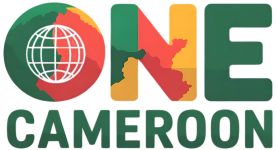Cameroon’s art scene has blossomed from traditional craftsmanship to a vibrant contemporary movement. Galleries, art centers, and community studios across major cities showcase painting, sculpture, photography, and mixed media—reflecting social commentary, cultural identity, and political expression. While traditional art forms remain integral, a wave of modern African artists has emerged, gaining acclaim at international exhibitions and diversifying Cameroon’s creative economy.
Traditional arts maintain strong footholds. The Bamum Kingdom’s “Palais Royal Museum” in Foumban preserves historical art forms: intricately carved thrones, beaded regalia, and Bamum script (Shü-mom), one of Africa’s few indigenous writing systems. Visitors witness master carvers demonstrating mask-making and wood sculpture—skills passed down through generations. Adjacent craft markets sell traditional pottery, leatherwork, and textiles, bridging heritage with local commerce.
In urban centers, contemporary galleries champion emerging talents. Douala’s MAM Gallery (Mobilier et Art Moderne) curates rotating exhibitions featuring painters such as Emmanuel Chok Martin and painters like Aly Dus. Their works experiment with abstract forms, vivid color palettes, and socio-political themes—urbanization, migration, and identity. Sculptors like Barthélemy Toguo integrate mixed media—wood, metal, and found objects—addressing issues such as environmental degradation and globalization. Toguo’s installations, exhibited at Venice Biennale in 2019, underscore Cameroon’s artistic reach beyond national borders.
Yaoundé hosts the Yaoundé Art Gallery (YAG), a government-run space highlighting both governmental and private collections. Exhibitions range from traditional folk art to digital art installations. In 2023, YAG’s “Heritage Reimagined” exhibition showcased reinterpretations of traditional Bamileke dance masks through digital projection mapping—blending ancestral motifs with cutting-edge technology. Visitors interacted with motion sensors—mask designs morphed as they moved, illustrating the dynamic relationship between tradition and innovation.
Community art spaces foster grassroots creativity. In Bafoussam, the Centre d’Art et d’Éducation (CAED) provides weekly classes in painting, sculpture, and ceramics for youth. CAED’s 2024 exhibition “Youth Voix” featured 50 artworks tackling themes from teenage pregnancy to deforestation. Local educators use art as a therapeutic tool—students express emotions and societal concerns through murals, collage, and poetry. Some standout pieces sold at charity auctions, funding after-school programs and scholarships for talented art students.
Photography’s popularity surged with the proliferation of smartphones. Café Galerie 53 in Bamenda curated a 2023 photo contest: “Cameroon Beyond Borders,” encouraging amateur photographers to document everyday life. Winning submissions—ranging from nocturnal cityscapes of Douala’s Bonanjo district to close-ups of Baka hunter-gatherers in East Region—got printed on large canvases and displayed in a month-long exhibit. Photographers earned cash prizes and opportunities for mentorship by established professionals.
Art festivals unite creators and enthusiasts. The Douala Art Walk—an open-air festival—transforms city streets into living galleries. Murals by local and international street artists adorn building facades, reflecting social themes—urban development, gender equality, and conservation. Guided tours led by art critics and historians provide context on each piece’s symbolism. In 2024, the festival introduced “Augmented Art,” where visitors scan QR codes near murals to view artist interviews and behind-the-scenes videos, deepening engagement.
Residency programs attract international artists and foster cross-cultural exchange. The Rijksakademie residency in Douala invites Dutch and European artists to collaborate with Cameroonian peers—creating joint exhibitions exploring postcolonial narratives. The 2022 “Transit Cities” residency culminated in a collective exhibition at the Doual’Art Center, merging photography, performance art, and interactive installations—exploring mobility, displacement, and urban transformation.
Local art markets provide platforms for sales. Le Marché Central in Yaoundé features pop-up art stalls on weekends: painters selling affordable prints, sculptors offering small bronze statuettes, and ceramicists displaying functional pottery. Visitors haggle prices—an integral part of Cameroonian market culture—often accompanied by hearty laughter and friendly banter. Seasonal themed markets—such as the “Christmas Artisan Market”—include live painting demonstrations, craft workshops, and art auctions.
Art education at the tertiary level has expanded. The University of Dschang offers a Bachelor’s in Visual Arts, blending theory and practice: students learn art history, studio techniques, and digital media. The National School of Art (École Nationale des Arts) in Buea provides specialized diplomas in ceramics, textiles, and graphic design. Graduates often launch independent studios or join cultural NGOs—organizing community art projects or teaching workshops in rural areas.
Government initiatives aim to promote Cameroonian art internationally. The Ministry of Arts and Culture (MINAC) funds artist delegations to biennales in Dakar, Johannesburg, and Cairo. The “Cameroon Pavilion” at the Dakar Biennale 2022 showcased multimedia installations addressing climate change’s impact on rural livelihoods—garnering critical acclaim for artists like Quistre De La Besse. Ministère lobbies for more art in school curricula—proposing that art education cultivate creativity, critical thinking, and cultural pride among youths.
Online platforms extend artists’ reach. Instagram accounts such as @ArtCameroon and @DoualaArtists promote weekly features of painters, sculptors, and digital artists—tagging local galleries and upcoming exhibitions. ArtCollectiveCM, an e-commerce portal launched in 2023, aggregates works from over 100 artists, facilitating domestic and international sales. Buyers can filter by medium, price range, and region—supporting artists financially and showcasing Cameroonian creativity globally.
Cameroon’s art and gallery scene is dynamic—bridging tradition and modernity, local expression and global dialogues. As more Cameroonian artists gain international exposure and digital platforms democratize access, the nation’s cultural footprint continues to expand. Each painting, sculpture, and photograph tells a story—reflecting Cameroon’s complex history, rich heritage, and the visionary minds shaping its artistic future.









